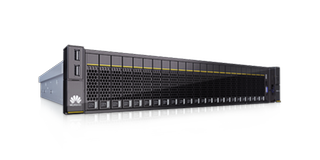Power of partnership in perfecting technological innovations

New technologies like artificial intelligence, cloud and intelligent computing are picking up speed in development as well as penetration into the commercial world.
Service providers are experiencing huge changes in terms of demand in technology as enterprises embrace digital transformation. Many of the requirements are getting more complicated as the business models continue to evolve along the behavioural changes among users.
However, one size doesn't fit all.
No single ICT company can solve all the problems for every enterprise. Tech firms must engage in strategic partnerships to ensure successful and sustainable digital transformation, not only for clients, but also for themselves. Collaboration is essential to drive innovation.
Huawei is a strong believer in partnerships. Over the past decades, Huawei has been collaborating with various organisations for innovations across multiple areas. Along this development, Intel is an important partner, as both firms are providing a wide range of solutions for customers.
The tech giants share an interesting feature. They both invest heavily in research and development, which always lead to innovations that go beyond imaginations.
While both work tirelessly to break the limits, they also work closely together to make sure equipment perform at top level, including constant upgrades in both hardware and software.
Long-standing collaboration with Intel proven in ever-evolving product series
The FusionServer product line is one of such examples. In 2019, FusionServer was boosted up to FusionServer Pro to meet the requirements of intelligent data centre transformation. Another round of upgrade was made earlier this year, where the entire FusionServer Pro series worked on the latest Intel Cascade Lake Refresh processors. The full series include rack, high-density, blade, heterogeneous, and mission critical servers, ensuring customers can run on these latest products and solutions.
In fact, the partnership between Huawei and Intel has been in place for a long time and still developing. Over the past decade, Huawei has shipped over 4.31 million x86 servers, and the number is still growing.
Despite some ups and downs in 2019, Huawei’s server shipment still reached 746,000 units, ranking No. 5 in the world. It once again shows the importance of partnership, where collective efforts help everyone to go through stormy periods.
Collaborations also allow exchanges of knowledge and expertise. Intel has launched AEP memory, the first-generation data centre persistent memory, which addresses customers’ frustrations about small and costly DRAM.
Last year, Huawei introduced AEP into its mainstream products as well as SAP HANA solutions. Huawei and Intel have recently started the introduction of the second-generation data centre persistent memory into more product lines.

Joint efforts with SAP in HANA solutions
Speaking of the HANA solutions, it is another product from a reliable partnership that involves exchanges of expertise. In 2012, SAP listed Huawei as its first global technical partner. In the following year, the firms jointly released the first certified Huawei SAP HANA appliance, which combined SAP’s knowledge in data processing and Huawei’s high-performance hardware platform.
As the collaboration further developed, Huawei and SAP established a joint innovation centre in Shenzhen in 2017, followed by the roll-out of the high-end HANA system based on Huawei’s self-developed KunLun processors. Last year, they signed another memorandum of understanding on the Galileo project for industry solutions. The potential is tremendous, and only the sky is the limit.
Partnerships are inevitable amid the increasing reliance of technology. But Huawei has also been agile, taking care of itself very well. This warrants undisrupted support to partners and clients. The company has maintained stable supply and deliveries in multiple dimensions.
On the level of supply chain, Huawei has set up supply centres across the globe. Facilities in Europe, Mexico, Dubai, Brazil, and China, guarantee its multi-node, multi-path delivery capabilities. Amid the coronavirus outbreak, the customer-centric company maintains the two-week delivery time for typical configurations in key regions, so that clients’ requirements can be met even during critical periods.
Robust supply chain and productions to support business operations
Huawei keeps its supply for both materials and products sustainable by operating its backup mode using both stocked components. These parts were either sourced in earlier or produced by the tech giant itself. As for productions, it is capable of independently running the entire manufacturing process from components to the whole set of equipment. By using mainstream element management system, Huawei can easily meet supply requirements during different times.
Recently, Huawei has announced its further collaborations with Intel and SAP, including the upgrade of the FusionServer series that can run on the second-generation Intel Xeon Scalable processors. The processors provide one balanced foundation for unprecedented scaling, enabling optimised performance, networking, memory, storage, and fabric for today’s and tomorrow’s enterprise workloads. Intel also has the technology to speed up AI processing with its Deep Learning Boost, allowing enterprises to run applications with built-in AI or standalone frameworks.
As Huawei's founder and CEO, Mr Ren Zhengfei, has said before, “Only through open collaboration can we meet people’s demands and bring the benefits of new technologies to more people at lower costs. It takes a well-thought collective effort to achieve”.
Huawei is committed to bringing in more partners to work together and expand the ecosystem for the greater good of the world.
Get more information / free POC about FusionServer Pro.


